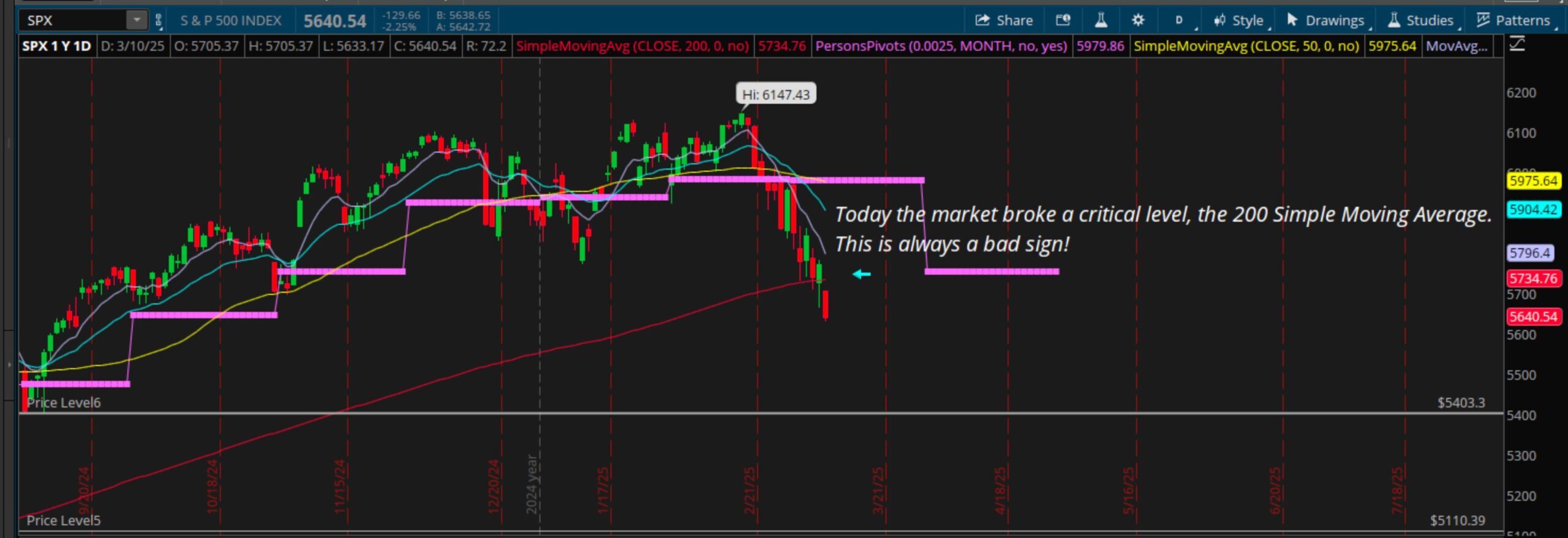Today the financial markets are struggling, and retirement portfolios are taking a hit. If you’re worried about your future, now is the time to act. The best way to protect your retirement is to minimize risk while still allowing for growth. Whether you have individual stocks, an IRA, or a 401k, here are some key strategies to protect your retirement savings while keeping some exposure to potential market gains.

1. The Best Way to Protect Your Retirement is to Not Risk It
If you’re nearing retirement or already there, you can’t afford to gamble with your savings. Conservative investments like annuities and life insurance products can provide safety and steady returns.
- Annuities: These offer protection of your principal so you never lose money, guaranteed income for life, ensuring that you don’t run out of money. Fixed and indexed annuities provide conservative growth, and you can add riders for additional benefits like long-term care coverage or death benefits.
- Life Insurance: Certain life insurance policies, like whole life or indexed universal life (IUL), provide cash value growth while protecting against market losses. They can also serve as a tax-advantaged way to pass on wealth or as a powerful tax strategy for business owners.
2. Follow the Wall Street Rule of 100
The Wall Street Rule of 100 helps determine how much of your portfolio should be in conservative investments. Take 100 minus your age, and the result is the percentage of your portfolio that should be in stocks. The rest should be in safer investments.
For example, if you’re 60 years old:
- 100 – 60 = 40% in stocks
- 60% in safer investments (annuities, bonds, cash, etc.)
This strategy allows you to participate in market growth while ensuring that a large portion of your savings is safe from significant losses.
3. Move to Safety: Cash and Treasury Bills
If you want liquidity and guaranteed returns, moving a portion of your assets into safe havens is a smart move.
- Cash: Keeping some of your portfolio in cash ensures you have funds available in case of emergencies or market downturns.
- Treasury Bills (T-Bills): These are government-backed and offer stability. Consider using ETFs like SGOV, which invest in short-term U.S. Treasuries. There’s several fixed income ETFS out there with low expense ratios.
- Money Market Accounts: These offer similar returns to CDs but with greater liquidity and no early withdrawal penalties.
- Certificates of Deposit (CDs): While CDs provide guaranteed returns, they lock up your money and are taxed annually. A money market account is a better alternative in most cases.

4. Use Counter-Cyclical and Dividend Stocks
If you still want stock exposure, focus on companies that perform well in recessions:
- Dividend Stocks: Companies like Altria (MO) and Philip Morris (PM) have a history of paying solid dividends. Even in downturns, they provide reliable income.
- Recession-Proof Stocks: Essential goods retailers like Walmart (WMT) tend to thrive when the economy struggles. Walmart’s stock surged during the COVID crisis as people shifted their spending habits.
While these stocks can provide stability, diversification remains key. This isn’t financial advice—just information on historically stable investments.
5. Set Stop Losses and Work with a Competent Broker
If you haven’t set stop losses, now is the time. A stop-loss order sells a stock when it reaches a specific price, protecting against further losses.
- If your broker hasn’t contacted you yet, it’s a red flag. Market conditions today are critical. We broke the 200-day moving average with massive sell-offs, and even Trump acknowledged a possible recession, triggering further panic.
- Expect a short-term bounce, which may be your chance to exit certain positions or set stop losses to minimize risk.
6. Protect your Retirement By Hedging with Put Options
For investors who understand options trading, buying unit put options can be an effective hedge against market downturns.
- Example: Last year, I tracked a potential play on VIX put options but hesitated. Those cheap, out-of-the-money puts went from under $200 to over $1,000 each due to a massive volatility spike. This strategy can protect against uncertainty—if you know how to execute it correctly.
- The Reality: Most brokers don’t fully understand volatility strategies like Black-Scholes pricing models or VIX hedging. If you want to explore this strategy, educate yourself thoroughly or consult an options expert.
7. Adjust Your 401(k) Allocation to Reduce Risk
If your retirement savings are tied up in a 401(k), you can still take protective steps:
- First, I would only contribute the match to your 401k and use other asset classes to save for retirement. This strategy keeps a portion of your retirement savings safe at all times and also provides tax diversification.
- Move to Bond Funds or Cash Reserves: Most 401(k) plans have safer options like stable value funds, bond funds, or money market funds. These provide protection in turbulent times.
- Rebalance Frequently: Ensure your portfolio aligns with your risk tolerance and retirement goals. If you’re nearing retirement, reduce stock exposure.
- Consider Target-Date Funds: These automatically adjust your asset allocation as you approach retirement, shifting toward safer investments over time.
Take Action Now to Protect Your Retirement
The market is unpredictable, and major sell-offs signal economic uncertainty. Don’t wait for more losses—take control of your retirement now.
- Reduce exposure to high-risk stocks.
- Move a portion of your assets into safe investments.
- Use stop losses and hedging strategies if applicable.
- Work with a competent financial advisor who understands risk management and isn’t just there to collect fees.
Protecting your retirement is about being proactive. Don’t leave your future to chance—make smart moves today to safeguard your financial security. If you’d like to schedule an appointment to learn more, feel free to contact us.
Need more information on how to protect your retirement, check out our other posts:

